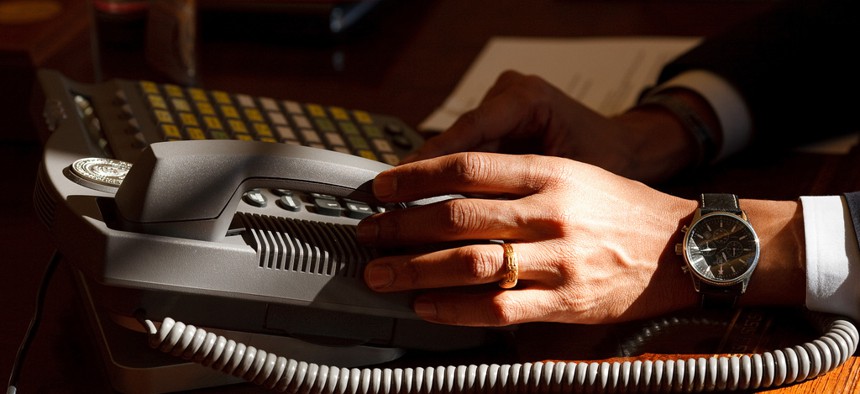No Red Phone Ever Connected the White House to Moscow

President Barack Obama has a regular phone in the Oval Office. White House
Another case of 'direct access' not being quite what you first thought.
If there's one symbol that conveys the power, secrecy, responsibilities, and brinkmanship of the modern presidency it's the red phone, the direct line of communication from the White House to Moscow. Funny thing though: It's a myth. There never was any red phone.
Following the Cuban Missile Crisis, during which messages traveling between the two superpowers could take half a day to reach their destinations, American and Soviet leaders agreed that they needed a faster and more secure way to communicate. In a memorandum from June 1963, the two powers agreed that "for use in time of emergency the Government of the United States of America and the Government of the Union of Soviet Socialist Republics" ought to "establish as soon as technically feasible a direct communications link between the two Governments." But the result was not a red phone. As Tom Clavin writes at Smithsonian:
The use of the word "direct" in the memo's title was a bit misleading; there was no red phone involved. Messages sent to the Soviet Union on the wire telegraph circuit were routed on a 10,000-mile-long transatlantic cable from Washington to London to Copenhagen to Stockholm to Helsinki and finally to Moscow.
Still, it was a start. Soon after the agreement, four American-made teletype machines were flown to Moscow and installed in the Kremlin. An equal number of machines manufactured in East Germany were shipped to the Soviet Embassy in Washington. They were delivered not to the White House but to the Pentagon, which has remained home to the "hotline" ever since. The two sides also exchanged encoding devices so that the Americans could translate received messages into English and the Soviets could translate messages into Russian on their end.
The hotline was up and running by the end of August of 1963. John F. Kennedy, assassinated just three months later, never had cause to use it.
Read the full story at TheAtlantic.com.
NEXT STORY: An Ode to VA: Let Me Count the Ways





